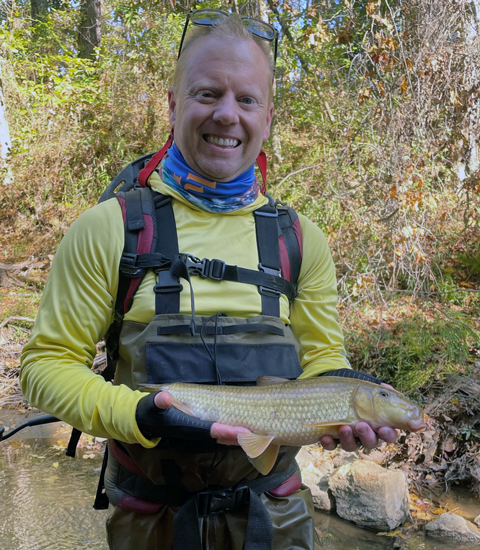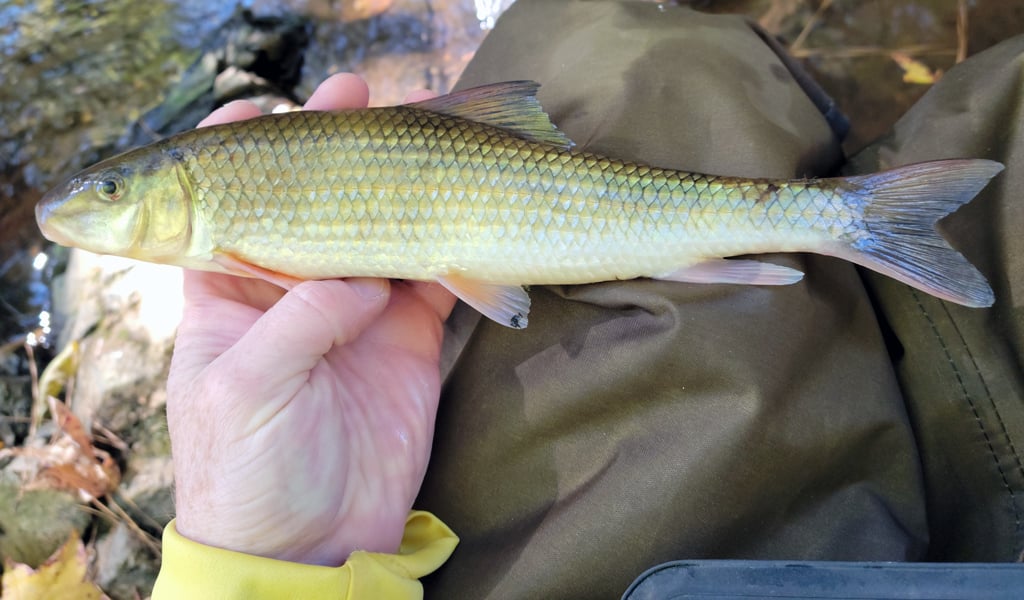
VHB aquatic ecologists are often found in creeks and rivers across the Southeast conducting surveys and assessments. For Jeff Pittman, VHB Atlanta Senior Aquatic Project Manager, monitoring fish populations in streams in the Atlanta metro area is just another “day at the office.” These surveys are part of a watershed monitoring program in Georgia required of many National Pollution Discharge Elimination System (NPDES) permittees to assess potential impacts of their discharges on nearby aquatic systems. The survey results are submitted to the state for review.
After reviewing a recent VHB annual collection report, the Georgia Department of Natural Resources (GDNR) Wildlife Resources Division contacted Jeff regarding one particular entry. Upon confirming the identification, GDNR informed Jeff that the collection of the Apalachicola Redhorse (Moxostoma sp. 1) during a VHB fish community survey was the furthest upstream known occurrence of the species within the Middle Chattahoochee River watershed and the first in metropolitan Atlanta.
While this sucker species has not yet attained protection status in Georgia, it is intolerant to the effects of environmental degradation and considered vulnerable because of its restricted range, relatively few known populations, and widespread declines, which make it susceptible to extirpation.
“I was quite surprised to collect this species during any of the surveys for the city, let alone from Utoy Creek. This watershed is well-known for its issues, particularly pollution from combined sewer overflows that have been going on for decades,” said Jeff. “This discovery may not seem significant, but I’d personally like to think of it as a glimmer of hope that this—and other—species can persist in degraded conditions and hopefully thrive in the future, if and when conditions improve.”
Public and private organizations that hold permits to discharge treated wastewater must also have an approved Watershed Protection Plan in place to monitor water quality and the health of biological communities in associated streams and rivers. Bridges and new construction for state departments of transportation (DOTs) also utilize VHB aquatic biologists to help meet federal and state regulatory requirements and increase knowledge about human impacts on critical bodies of water and the fish and macroinvertebrates that inhabit them.
Jeff and his team have been monitoring biological health at this and numerous other sites around the City for years. VHB aquatic professionals help clients navigate the environmental regulatory process by conducting literature reviews, field surveys, and GPS data collection. The team notes changes in conditions between studies. As far as the fish sample is concerned, changes can appear quite dramatic.
“We experience highs and lows pretty frequently as the result of sampling most sites every two or three years,” said Jeff. “The fish community surveys are just snapshots and from a relatively small section of stream. We have to keep in mind that a large decrease in abundance and diversity one year may simply reflect temporary conditions; therefore, only long-term monitoring can provide an accurate assessment of conditions. More often than not, the effects of degraded habitat and water quality on biological communities are evident.”
Jeff has conducted protected species surveys, biological monitoring, and various other aquatic studies for nearly 20 years, including projects for DOTs in Georgia, Florida, and Alabama. He works under VHB’s Section 10 permit that covers most federally protected fishes and mollusks in Georgia.



